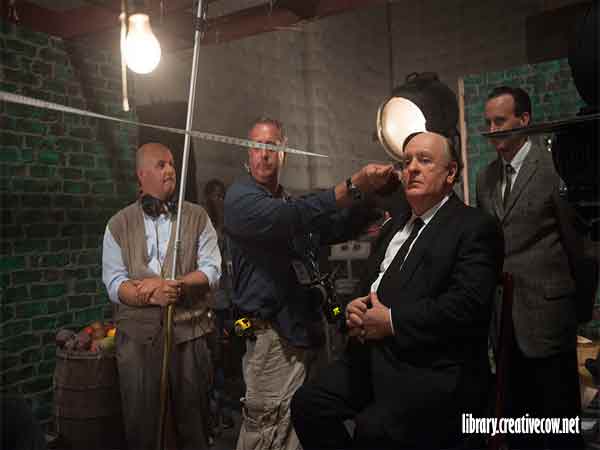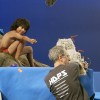post production
All you need to know about Film Lighting: Part 1 | Tips and Tutorials
Lights! Camera! ACTION!!
We all know Lighting is used to emphasize the area of action in a picture. But, when used creatively, Film Lighting can be an expressive tool for a filmmaker much beyond mere illumination of action. A brightly lit area in a frame grabs our attention while a dark area creates suspense. Lighting also creates depth and articulate textures of objects in the frame.
In this article and the following articles, we will discuss some important aspects and techniques of Film Lighting that are key to understand the Language of Film.
“Lighting expresses ideology, emotion, colour, depth, style. It can efface, narrate, describe.”
-Federico Fellini, Film Director
One of the most important uses of Light is to create a sense of space and time. Through the Light, a filmmaker can suggest the kind of space and the time of the day of the scene. Two important concepts in this regard are Highlights and Shadows.
Highlights are those areas in a frame that are relatively brighter than other parts. Shadows are obviously the relatively darker parts. Shadows are of two types- Attached Shadows & Cast shadows. Attached shadows are those which the light fails to illuminate because of the shape of the object. Cast shadows are shadows that are cast on a surface by an object placed in front of the light source. Highlights and Shadows are used to create contrast in the frame that makes the frame more interesting and dramatic.
The Quality of Lights affects the Highlight and Shadows immensely. Quality is defined as the intensity of the light. Hard lighting creates well-defined shadows and has high contrasts. It comes from a light source that is smaller compared to the subject. Soft Lighting lowers the contrast, blurs contours and textures and creates a more diffused illumination where light is scattered. It comes from a light source that is much bigger than the subject.
Also read: What is called Time-freezing in Film editing?
In this shot (picture 1 given below ) from Satyajit Ray’s Aparajito (1956) (DOP- Subrata Mitra), Hard lighting has been used. The most highlighted area is the young Apu’s face. The other highlighted areas are- Both Apu and his mother’s bodies, parts of the room and the props. One of the striking shadows is the shadow cast by Apu’s Body on the wall. The shadow is cast because Apu sits in between the light source and the surface wall. Another cast shadow is of the globe. Here attached shadows can be seen in the palm of Apu’s right hand, the left side of the small metal waterpot in the foreground, the part of the room on the right side of Apu
In this shot (Picture 2) from Anurag Kashyap’s Dev D (2009) (DOP- Rajeev Ravi), Attached Shadows are more prominent. The eye and the chin region have attached shadows as the light fails to illuminate those areas while the forehead and the shoulder regions are highlighted. Here also Hard Lighting is used.
Picture 2 Dev D Flim Lighting Techniques
This shot from Anand Gandhi’s Ship Of Theseus (2012) (DOP- Pankaj Kumar), uses Soft Lighting which creates lesser contrasts. All parts of her face are illuminated. Even the background is illuminated without much shadow.
This shot (Picture 3) from Anand Gandhi’s Ship Of Theseus (2012) (DOP- Pankaj Kumar), uses Soft Lighting which creates lesser contrasts. All parts of her face are illuminated. Even the background is illuminated without much shadow.
Picture 3: Anand Gandhi’s Ship Of Theseus Demonstrated to explain Film lighting Tips and Tricks
In later articles, we’ll discuss some other techniques of Film Lighting and how Lighting is used in various genres of films to create a specific mood.
Continuation….
Part 2| Film Lighting Tips and Techniques: Light Source & Direction.
Part 3: Film Lighting Methods: Light Source & Direction.
Related Tags: Film Lighting Techniques and Tips with Examples, Film lighting examples from best Films
Follow us on Facebook!
Ask a Question. FilmmakersFans will respond to it within next few minutes. Try Now.















































Nikhil
June 22, 2016 at 10:40 am
I personally love this film lighting techniques article, especially that illustration by using Satyajit Ray Film Aparajito’s Lighting Technique.. I am a great fan of M.r. ray.
A suggestion
It’s good if you can illustrate the Practical Cinematic Lighting Tutorials, by demonmstrating clips of a filmmaker’s specific film. Say an instance, every filmmaker inspired about the filmmaking techniques followed by hitchcock and of course he’s a great cinematographer too. IT’S GOOD TO KNOW ABOUT THE FILM LIGHTING TECHNIQUES FOLLOWED IN A MOVIE
vishnu
June 27, 2016 at 3:11 am
Probably, this is one of the best article on Film lighting techniques and tips that i ever read. Please include the PDF version also
Manish
July 4, 2016 at 3:33 am
Oops! I noticed a big mistake on this Topic
At the Bottom of this article, I Noticed this
Part 2| Film Lighting Tips and Techniques: Light Source & Direction.
Part 3: Film Lighting Methods: Light Source & Direction.
Though the two links are re-directing to the different pages, the link text is same. Do take actions to correct it immediately.
Manish
July 4, 2016 at 4:31 am
Perfect one on the Cinematography-film Lighting Techniques and Tips. What the best thing of this article is simple and Understandable writing pattern. Now, a suggestion to the Team Filmmakers Fans is to include the PDF version of this topic so that it will get more attention for your Topic.
Thank you. Keep include Film Lighting Tutorial Videos. As you know that there are lots of Film lighting Tutorial Videos on You Tube. Hope You guys will consider it
FMF Resources
July 4, 2016 at 3:56 pm
Sure, we will Include More Lighting Videos. You can find that on our site
Manish
July 4, 2016 at 4:32 am
Oops! I noticed a big mistake on this Topic
At the Bottom of this article, I Noticed this
Part 2| Film Lighting Tips and Techniques: Light Source & Direction.
Part 3: Film Lighting Methods: Light Source & Direction.
Though the two links are re-directing to the different pages, the link text is same. Do take actions to correct it immediately.
FMF Resources
July 4, 2016 at 3:48 pm
Thank you. We will Certainly clear the mistake ASAP
Sreesanth
July 15, 2016 at 3:18 pm
Okay. But, why won’t you guys consider Film lighting tips and Tricks by illustrating a scene from a movie?